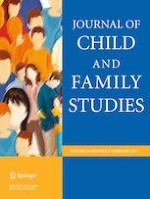23-11-2018 | Original Paper
Parental Support in Taiwan that Promotes Children’s Physical Activity
Gepubliceerd in: Journal of Child and Family Studies | Uitgave 2/2019
Log in om toegang te krijgenAbstract
In Taiwan, children’s physical activity (PA) levels have been declining, which leads to a higher risk for chronic disease in adulthood. Children’s PA habits are formed within environmental and social contexts in which parents play a fundamental role. Most studies that evaluate parental factors are Western and use single or unidimensional measures. There are few Asian studies, especially of young children, on this topic. Hence, we developed a culturally sensitive and multidimensional scale to determine how parents in Taiwan can effectively promote children’s PA. We based our scale on the Activity Support Scale (ACTS) and processed it using a World Health Organization (WHO) protocol. We recruited 428 parents of school-aged children and used exploratory factor analysis (EFA) and confirmatory factor analysis (CFA) to test its content validity. We then distributed the verified scale to a new group of 615 parents for criteria-related validation using multivariate logistic regression. We finally developed a multidimensional scale comprised of three major factors of parental support for children’s PA: (1) modeling, (2) logistic support—the first two are based on the ACTS—and (3) parental regulation, a newly found factor. This scale provides a culturally sensitive measure of parental influence on children’s physical activity.
